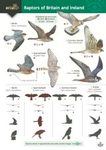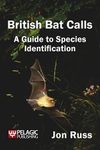![Raptor Prey Remains Raptor Prey Remains]()
Click to have a closer look
About this book
Contents
Customer reviews
Biography
Related titles
Recommended titles
About this book
Are you curious about the remains of an animal you have found? This compilation of the most likely found body parts of animals eaten by raptors will help you identify your discovery. Including over 100 species of bird and mammal prey of raptors such as sparrowhawks, peregrines and hen harriers, this photographic guide highlights the common feathers, fur and other body parts found at raptor nests, roosts, plucking posts and other opportunistic spots.
Discovering what raptors eat is an important part of confirming their feeding ecology and how this might change over time, vary on a local level or in response to changing prey populations, as well as dispelling myths and assumptions about what certain raptors species eat. Diet studies are vital for the conservation of raptor species; the more we know about what they need for survival the more we can predict and plan long-term for the protection and survival of raptors that may be vulnerable and in decline.
This is the first book to show in detail the actual parts of a bird, mammal or other animal that you are likely to find in a garden, woodland or beneath a raptor roost. As more people take an interest in raptors and watch species such as peregrines via webcams and through watch groups, there is greater opportunity for finding prey remains. Raptor Prey Remains provides the first and most important step in identifying a prey species.
Contents
Introduction
Finding raptor prey remains and next steps
- Where to begin
- What’s been at work? A mammal or bird predator?
- Signs of predation
- Visiting regular prey sites
- Collecting safely
- Working out how many individuals of species you have
- Building up a reference collection and protecting from insects
- What clues do different raptors leave behind?
- Identifying prey using resources such as books and websites
- My own story – identifying peregrine prey
- How do I know my feathers?
Parts of a bird
Glossary
Prey species
Customer Reviews (1)
-
Whodunnit?
By
Keith
23 Feb 2021
Written for Paperback
The cover of this book is quite stunning, although also somewhat gruesome, with a Sparrowhawk bearing down on a Starling which it is pinning to the ground! Add to that a scattering of plucked feathers and the decapitated head of a Blackbird and a squeamish reader might well put this book down in a hurry! But that would be a mistake because what this full-colour book contains is something I’ve not seen elsewhere – a really good set of photos to help you work out who killed who.
As a Peregrine enthusiast, I have seen many dead birds around nest sites, and in many cases, the trail of evidence is easy to read, but not always. Through its collection of over 300 colour photographs this book is small enough to accompany me in the field so that I can become a better detective. Clearly having the severed head of a bird makes life easy, but often you have just a few feathers to work with – or maybe a leg. The accompanying text is quite short but is enough to alert you to the key features to look for. Given the author’s work on Peregrines, there is a bias towards what they tend to eat, but there are examples of prey taken by other raptors such as Goshawk, Barn Owl, and Golden Eagle, and so some mammal remains are also included at the end. What struck me is the huge range of species killed by these raptors and how the finding of just a couple of feathers can reveal that a rarity has been consumed, such as a Spotted Crake! There is a short but useful introduction about how to collect these feathers and body parts safely, and how to start the identification process. This includes references to additional resources to identify feathers and skulls.
Was this helpful to you? Yes No
Biography
Ed Drewitt has been collecting feathers and skulls since he was seven years old and studying the diet of urban peregrines for over twenty years. He has a good eye for identifying even the tiniest of feathers and has learnt which body parts we are most likely to find after a raptor has fed.



















































